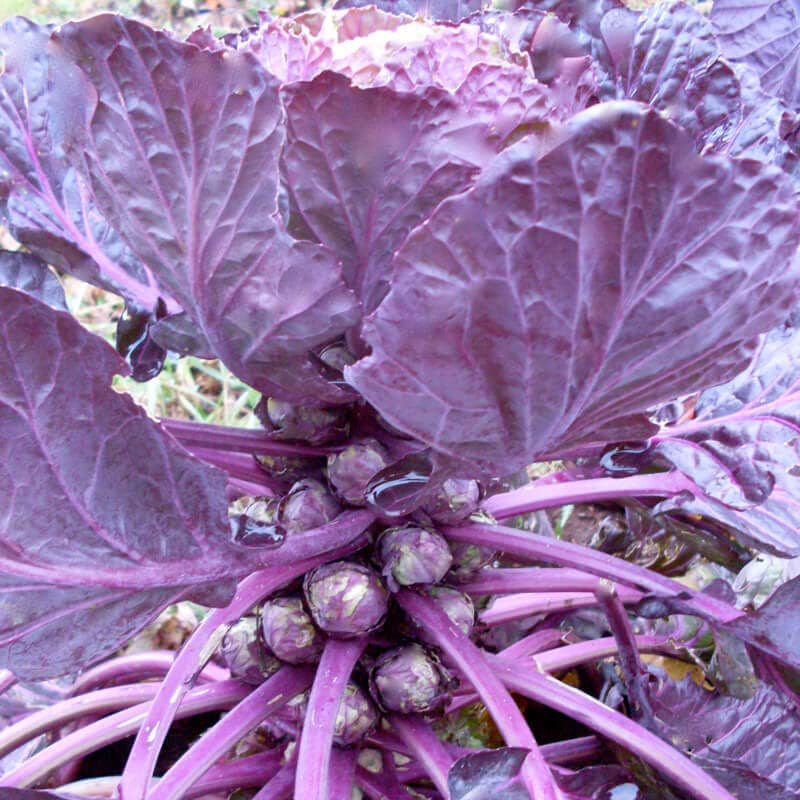Brussels Sprouts, Red Bull (Organic)
Brassica oleracea. Red. 210-260 days.
Vigorous 3’ plants form 1-2” sprouts in fall and winter when transplanted into the field May to early July. Sweet, nutty flavor especially after frost when the plants turn a deeper red/purple. Sprouts stay purple when cooked. In our opinion, one of the few good open pollinated red Brussels sprouts. Very hardy and far superior to Rubine, though there is some variability in plant color, sprout size and formation. Late to mature. Earlier sowing (mid-April through May) will yield more, earlier, and larger sprouts, but can be successfully sown through mid-June and still yield well. When planted in May, sprouts are ready for harvest December through February. Originally sourced from Tozer’s seed company in England, we thank Pitchfork & Crow for their past stewardship of this variety.
Seed produced by Humming Bee Nursery in Marcola, Oregon.
As required by the Oregon Department of Agriculture and the Washington Crucifer Quarantine, all Brassica family seed lots have been tested and found negative for blackleg (Phoma lingam) by an approved, certified lab.
| Geographical Origin |
|---|
Sow indoors in flats with good potting soil April through early June, for sprouts in November through February. Transplant into the garden about 3-4 weeks after emergence. For optimal sprout production, pinch growth tip off in late August. Harvest sprouts after autumn frost and as needed throughout the winter.
Seed Saving
Collect seeds from 50 or more plants (to avoid inbreeding) in the second year when pods are dry. Dance on seed stalks on a tarp to thresh. Collect seeds and winnow to clean. Isolate from other B. oleracea by ½ mile.



Question
Roland Young –
Curious about the long production time. In a cold climate like KS, it can be single digits to -10 in December-February. Will this kill the sprouts? Would they have to be grown in a non heated greenhouse here?
Upvote if this was helpful (0) Downvote if this was not helpful (0) Watch Unwatch Flag for removal
Shop Manager Andrew Still –
Most Brassicas, including Brussels Sprouts, will not survive much below 10 degrees F. Considering the cold and heat of KS, I would not recommend Brussels Sprouts in your area.
Upvote if this was helpful (0) Downvote if this was not helpful (0) Flag for removal